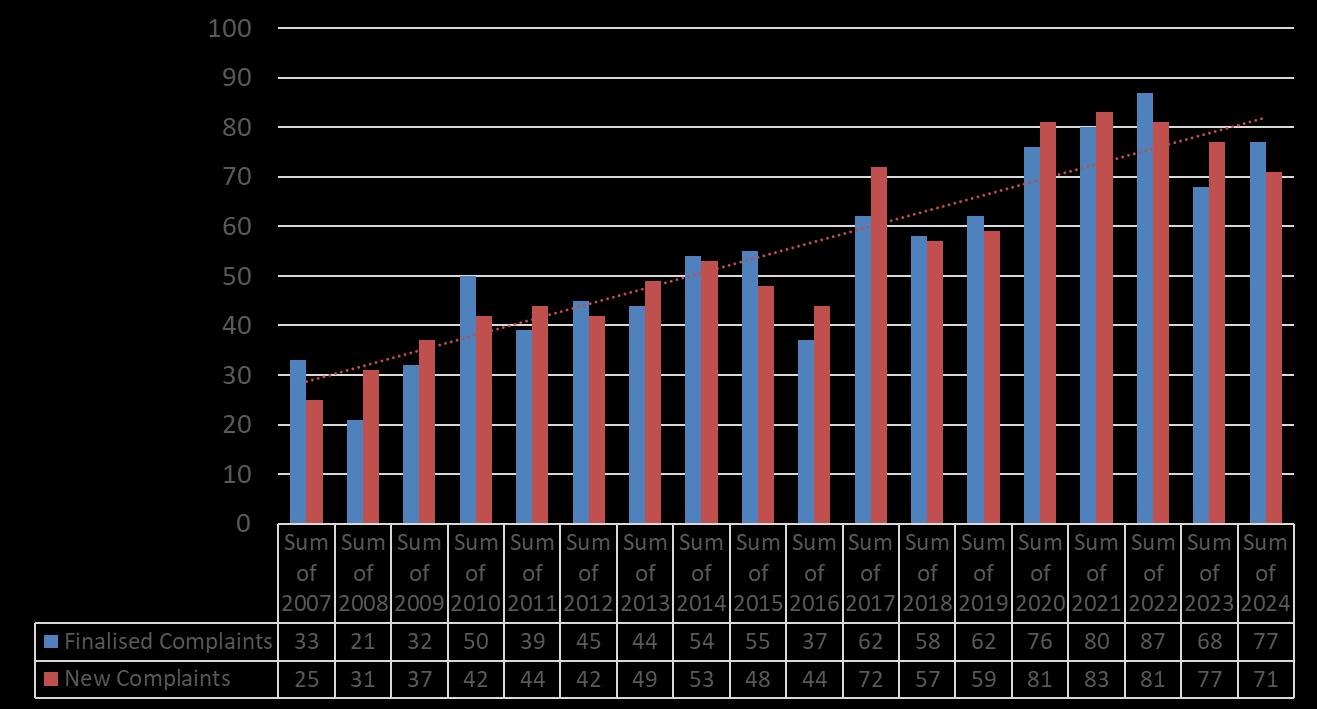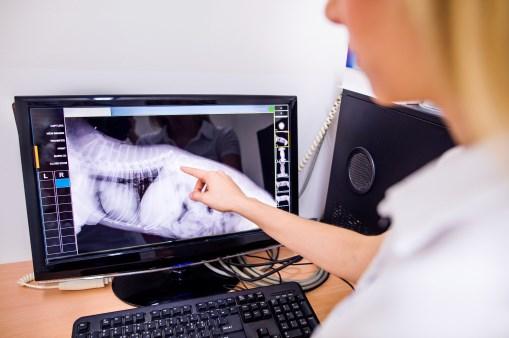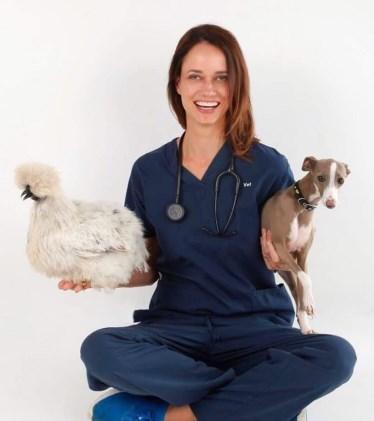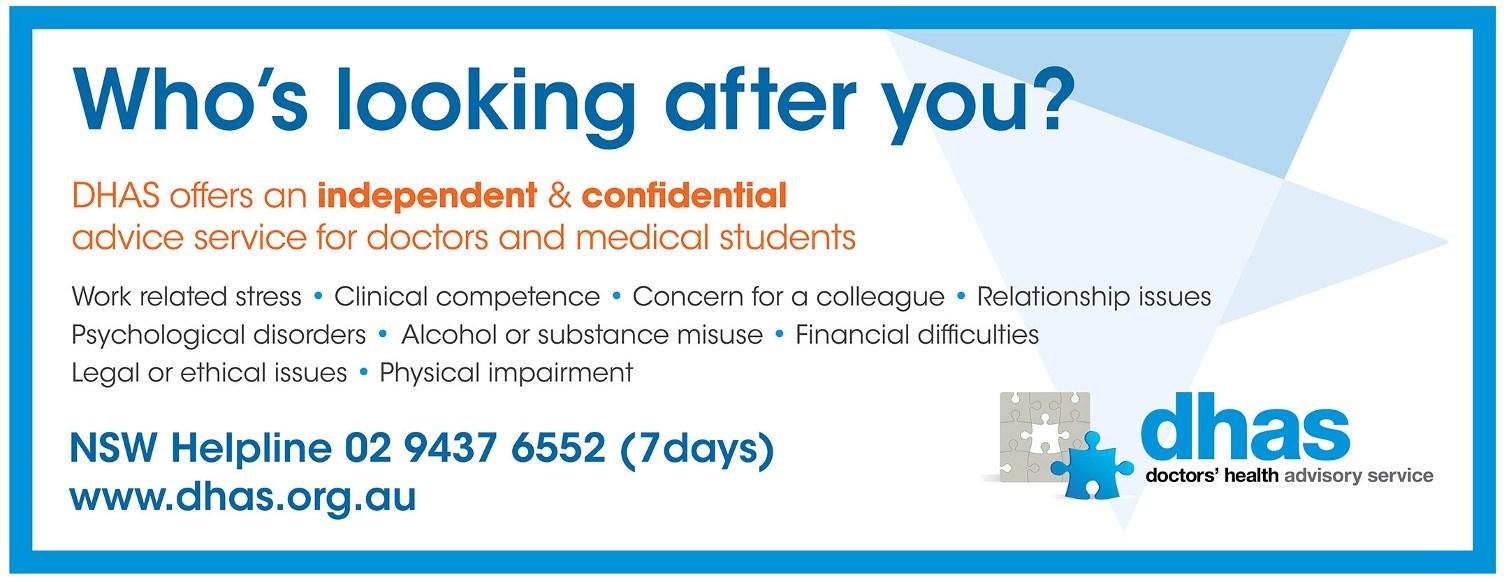Veterinary Practitioners Board
New South Wales

New South Wales
The Australasian Veterinary Boards Council (AVBC Inc.) was incorporated in 1999. The AVBC has an advisory function to make recommendations to veterinary registration and licensing authorities in Australia and New Zealand.
All veterinarians contribute $31.20 from their registration fee each year to support the function of the AVBC. In practical terms this function is largely achieved through its committees.
The Veterinary Schools Accreditation Advisory Committee assesses veterinary qualification programs; the Advisory Committee for the Registration of Veterinary Specialists assesses qualifications suitable for registration as a specialist; and the Australasian Veterinary Examination Committee administers an examination to ensure veterinarians with primary qualifications not approved by a recognised accreditation body are suitable for registration in Australian and New Zealand.
For most of its existence the AVBC has been led by Dr Julie Strous. Julie has seen this organisation gain an enviable international reputation as a provider of the above services and played a vital role in ensuring its success to the benefit of all veterinarians in Australia and New Zealand.
Julie recently announced her retirement from the AVBC and the Board would like to express its deepest gratitude for her leadership and service to the profession and wish her well for the future.
On behalf of the board, I would also like to extend a thank you to outgoing Deputy Registrar and Complaints Officer Dr Kate Drew for her unwavering dedication. Kate has played an instrumental role over the past 6 years in refining the complaints process and its overall governance.
Please ensure you renew your veterinary registration and hospital licence by 30 June.
Registration renewal requires completion of the Annual Return followed by payment of the registration renewal fee of $320 (unless honorary).
The annual registration renewal process is completed online using the Veterinary Board NSW portal A late fee of $60 applies to registrations renewed after 30 June and if you have not renewed by 31 July your name will be removed from the Register. Restoration to the Register under these circumstances will incur an additional fee equal to the registration fee.
Licence renewals are also completed online this year using the Veterinary Board NSW portal. Prior to payment a Hospital Annual Return will also need to be completed online by the superintendent or a veterinarian with a controlling interest in the licence. The annual licence renewal fee this year is $400 and must be completed prior to 30 June.
If you experience any difficulties with registration or licence renewals please call 8338 1177 or contact us

Prevalence of suicidality in
Centenary Award Nomination
Environmental

Registration renewals must be completed by 30 June 2025 for the registration period 1 July 2025 to 30 June 2026.
The registration fee is $320.
If you have not yet received your registration renewal notice by email please contact us
You can change your password by selecting I forgot my password
You can also change your email address and your phone number after logging in to the portal.
Problems with the portal or completing your annual renewal?
Call the 8338 1177 or contact us for assistance.

The second stage of the Veterinary Board NSW portal is progressing and the hospital or business module will be completed over the coming months. This module will complement the registration module completed last year.
The hospital module will enable the Board to better track changes in hospital licences and provide for greater levels of self-service such as changing superintendent details.
Importantly, it now allows for payments of annual licence renewal fees through the Customer Payment Platform developed by Service NSW. Payments may be made via credit card (Visa, Mastercard, American Express, UnionPay), PayPal, PayID and BPAY.
Prior to payment of the annual licence fee a hospital annual return will need to be submitted.
The hospital annual return will be used to confirm details on our hospital register and to provide additional information to assist with workforce planning and workforce capacity in NSW as part of our response to the workforce shortage enquiry.
This new form will complement our inspection program and licence transfer processes which have been used to assist licence holders in meeting requirements under the Veterinary Practice Act 2003 (s 69) and Veterinary Practice Regulation 2013 (reg 14).
Superintendents of veterinary hospitals will receive an email notification to complete the form via the Veterinary Board NSW Portal.
Any veterinarian with a controlling interest in the hospital licence will also be able to access and complete the hospital annual return form.
After logging in to the portal, superintendents and veterinarians with a controlling interest in the licence will see a Businesses link at the top of the screen next to their Registration link. Selecting the Businesses link will lead to a page listing any hospitals in which they have a role as superintendent or controlling interest. To complete the hospital annual return, select the name of the hospital.
Either a superintendent or a veterinarian with a controlling interest in the licence will be able to complete the form but the person who starts the form must submit the form
To complete the form you will need to:
1. Enter the Australian Business Number (ABN) which is present on your invoices
2. Confirm if the contact, address and controlling interest details are correct
3. Confirm your role as superintendent
4. Add any languages other than English spoken by staff
5. Add the number of staff for the hospital
6. Add the services provided and species treated (nature of veterinary services)
Some of the above details will soon be made available on our website to assist members of the public when searching for available veterinary services in their area.
If you are unsure of some details please check with a colleague or select ‘these details have changed’ and our staff will review later It is not currently possible for details to be updated using the portal (coming soon).
Once the hospital annual return form is completed you will have the option to either pay the licence renewal fee or to enter the name and email address of another person who will be able to pay this fee via an emailed payment link.
The Board has released its first dedicated report on veterinary workforce capacity in NSW the 2024 Workforce Report. Information about the veterinary workforce in NSW has previously been provided in the Board’s Annual Reports and presentations
The 2024 Workforce Report also provides a response to the Report on the Inquiry into the veterinary workforce shortage in New South Wales and the NSW Government Response
It is hoped that the information available may provide a reference point to measure and assess veterinary workforce capacity in NSW. To assist in creating benchmarks and to provide consistency in reporting, the report from the Veterinary Council of New Zealand was used as the basis for the Board’s report.
A variety of data are available in the Report including demographic features, work area, employment type, average hours worked, and full-time equivalent number of veterinarians (38 hour week) by area of practice (see tables 1 and 2 below), and by remoteness, Local Land Services area, and local government area.
Data collected in hospital annual returns this year will complement information collected from individual veterinarians enabling a more detailed picture of capacity with respect to species treated. An understanding of workforce capacity will be improved with numbers of veterinarians, qualified veterinary nursing staff and other support staff also being collected from the hospital annual returns.
The Board celebrated its centenary in 2024 with the announcement of its Centenary Awards
The Annual Centenary Awards program will continue to celebrate the achievements of veterinarians who have provided outstanding service in the fields of professional practice, public health, and animal welfare.

The objective is to support the profession in these achievements and to enhance the awareness of these individuals within the profession and the public.
Awardees will be drawn from two categories where possible:
1. Veterinarians who are in the first 10 years post graduation
2. Veterinarian who have given service for more than 10 years
A new committee has been formed to assess applications and award winners will be announced at the AGM in November.
Please consider nominating a colleague using the online application form today!
Applications close 31 July.

Health Program
An impairment is defined in the Veterinary Practice Act 2003 (s 4(3)) as any physical or mental impairment, disability, condition or disorder which detrimentally affects or is likely to detrimentally affect the person’s physical or mental capacity to practise veterinary science.
The Board appreciates the difficulties faced by a veterinarian suffering from an impairment and is committed to assisting these veterinarians through the establishment of its Health Program for Veterinarians
The goal of this program is to enable veterinarians to work their way through their health issues with the support of suitably qualified professionals and the Board.
The Board has adopted the procedures outlined in the Doctors’ Health Program (Medical Council of NSW) to achieve this goal.
As noted in the previous edition of BoardTalk, there was a delay in the appointment of a new Board last year such that there were no Board members from 1 July to 18 September 2024. This created a backlog in complaints for the new Board to manage.
The Veterinary Practice Act 2003 (Act) (s 49) provides that the Board may delegate any of the complaint functions to a committee established under the Act (s 81) and, if this committee is chaired by an Australian lawyer, the committee is able to both investigate and determine a complaint.
Typically, a complaints committee established by the Board has consisted of Board members only and therefore has only been able to investigate complaints and make a recommendation to the Board, with the Board responsible for determining the complaint.
The Board formed the opinion that it may be able to process complaints more efficiently by establishing a complaints committee chaired by a lawyer to both investigate and determine complaints. Hence there would be no delay (typically at least one month) from the time the investigation is concluded to the time the Board determined the complaint.
The Complaints Committee established with this structure also held 1-2 hour virtual meetings weekly initially and then fortnightly rather than in-person monthly half day meetings in an attempt to resolve the backlog.
For the period 1 November 2024 to 30 April 2025 this committee determined 27 complaints (26 complaints were processed over the same period last year) against 39 individual veterinarians.
Dismissed (Act s 46)
Dismissed with a recommendation
Unsatisfactory professional conduct
In addition to the above, two complaints were withdrawn by the complainant (complaints were withdrawn against 5 individual veterinarians).
As above, one complaint was dismissed under the Act (s 46). A complaint may be dismissed under this section if the Board is satisfied that the complaint
• is frivolous or vexatious or otherwise lacking in merit, or
• is a matter that has already been dealt with as a complaint, or
• is trivial in nature.
Currently the Board has 48 complaints under investigation.
In addition to the above change to the committee structure, the Board also has an option under the Act (s 43) to attempt to resolve complaints through alternative dispute resolution (ADR).
The Board has now employed a team of three veterinarians to assist with collecting and analysing information from complaints. These veterinarians provide informed and valuable assistance to the complaints committee.
The Board appreciates that the time taken to resolve complaints has been a consistent source of dissatisfaction and a potential stressor for both veterinarians and complainants and is looking at the various options available to it, such as staffing, committee structure, and ADR, in an attempt to reduce this time without adversely impacting the quality, efficiency and sustainability of its complaint investigations.
New and finalised complaints 2007-2024

The trend from 2007 to 2024 suggests that the Board will receive approximately 130 new complaints in 2034. For all complaints submitted to the Board over the period 2007 to 2024, 72% were dismissed.
Complaints dismissed 2007-2024


Hospital licence renewals must be completed by 30 June 2025 for the licensing period 1 July 2025 to 30 June 2026.
The licence renewal fee is $400. Renewal notices are generally sent to the superintendent initially and then to licence holder(s).
If you have not yet received your hospital licence renewal notice by email please contact us
Hospital licences are renewed using the Veterinary Board NSW portal
The Hospital Annual Return must be submitted prior to payment of the licence renewal fee.
The Hospital Annual Return must be submitted by the person who starts the form but the licence renewal payment may be completed by anyone who is provided with an email link to the payment site.
The Board has recently completed another full round of inspections of all hospitals in NSW (not including some newly licensed premises).
The inspection process is now performed every two to three years and is largely based on working through the selfassessment checklist for hospital superintendents.
The inspection process is much smoother if hospital superintendents complete this checklist prior to inspections.
Some of the more recent issues our inspectors have encountered are:
• Lack of ventilation in isolation rooms
• Lack of self-closing devices on external veterinary hospital doors
• Lack of radiation licences (management and user)
• Inadequate recording and auditing of controlled substances
• Lack of an appropriate written infection control plan.
In addition to being part of the inspection program, the Board encourages all veterinary hospital licence holders and superintendents to review the minimum requirements for veterinary hospitals document.



This is particularly valuable if you are planning on renovating or moving to a new location (noting the latter requires a new licence application).
It is important that veterinary hospitals continue to review and improve their processes, in particular ensuring regular auditing of controlled substances.
A hospital licence is held by one of the following entities:
• Individual (sole trader)
• Partnership
• Company
• Public Service Agency
• Agricultural Supplier
• Charity
For licences held by an individual, partnership or company, a veterinarian or veterinarians must have a controlling interest in the licence. A controlling interest is defined as the capacity to determine the outcome of decisions about the financial and operating policies of the corporation or firm (Act (s 4)(3)).
A licence transfer notifies the Board that either the entity or the veterinarian or veterinarians with a controlling interest in the licence have changed.
When purchasing or transferring a hospital licence, the Board encourages veterinarians to review the minimum requirements document and the self assessment checklist . We also recommend you ask for a copy of the most recent hospital inspection report from the current licence holder.
To complete the transfer you will need to either submit a Change in Structure form (records for the licence are continuous) or Licence Sale (current holder) and Licence Purchase (proposed holder) forms (a new licence record is created).
All of the above forms are available from our website under Businesses, Veterinary Hospitals, Transferring a licence

Des Lyttle joined the Veterinary Surgeons Board in March 2005 and has worked as the Registration Officer for 20 years.
There is a very good chance that most, if not all, of the veterinarians reading BoardTalk today had their registration application processed by Des.
Des has played a valuable role as the expert in registration of veterinarians in NSW and his willingness to help all other members of the team and his range of skills have made him a significant asset to the Board.
Des has seen many changes over the last 20 years from Veterinary Surgeons Board to Veterinary Practitioners Board, changes to legislation, and from all paper-based to all online processing of registrations.
Until 2012, Des was also responsible for photocopying and mailing all meeting papers to Board members, and up to 2018 he was the Board’s Finance Officer.
Des has both witnessed and played a crucial part in shaping the Board’s evolution and we have been truly fortunate to have Des as a member of our team.
Thank you Des for your hard work, commitment, and loyalty, and congratulations on reaching this significant milestone
Kate Drew joined the Veterinary Practitioners Board in 2019 as our first Complaints Support Officer.
The role was created in response to the increasing workload of complaints on both members of the Board and staff.
Kate’s background as both a lawyer and veterinarian was perfect for the role and she set about relieving the workload for the members of the Complaints Committee and fellow staff, particularly the Complaints Officer and Deputy Registrar Mary Lydamore (both pictured below).
Kate was also made significant contributions to improve the quality of our complaint investigation processing and reports of investigation.
In addition to her considerable professional skills and knowledge, Kate’s enthusiasm and cheerful disposition were greatly appreciated by the Board and staff.
Thank you Kate and very best wishes for the future.

Welcome Claire and Yvonne
The Board has recently appointed two veterinarians to assist the Complaints Committee with its role investigating and reporting complaint investigations.
Claire Bowland is senior emergency veterinarian with experience in first opinion and referral practice.
Claire has an extensive range of skills including within the areas of media, business, mental first aid, and mentoring.

Yvonne van der Veek is a senior emergency and critical care veterinarian with extensive experience both in Australia and overseas.
She has worked in both first opinion and emergency practice and volunteered to support with surgical desexing programs and wild horse management.
Yvonne also has qualifications in education and provides further training to veterinarians in emergency medicine.


Some veterinary practices offer boarding options for dogs and cats.
The NSW Animal Welfare Code of Practice No 5 Dogs and cats in animal boarding establishments outlines the standards for care and management of dogs and cats in all animal boarding establishments.
This includes veterinary hospitals offering boarding facilities.
The Board does not generally investigate complaints in relation to animal boarding facilities.
However, it is important for clients to realise that the level of care is based on requirements of the above Code and, unless admitted to the veterinary hospital, not the same level of care as would be applied to a dog or cat in a veterinary hospital.

In the realm of veterinary practice, informed consent is a cornerstone of ethical and effective
Informed consent goes beyond merely obtaining a client's signature on a form. It involves a process of communication and education, ensuring that clients are aware of what they are consenting to for their animal, including the likely benefits and risks associated with the proposed therapy.
Specifically, the Veterinary Practitioners Code of Professional Conduct (Code) provides for the following:
Informed consent
Clause 7 of the Code states that a veterinary practitioner must, where it is practicable to do so, obtain the informed consent of the person responsible for the care of an animal before providing veterinary services to the animal, and
2. Fees for veterinary services
Clause 16 of the Code states that a veterinary practitioner must, where it is practicable to do so and before providing veterinary services in relation to an animal, inform the person responsible for the care of the animal of:
a) The likely extent and outcome of the veterinary services, and b) The estimated cost of those services

Informed consent is a process that helps clients make an educated decision about their animal's care.
This includes:
• Cost Implications. Transparency about the costs involved is a critical component of informed consent. Clients need to be informed about the financial aspects of the treatment, including any likely follow-up care that may be required. Cost discussions can help prevent misunderstandings and complaints, ensuring clients are conscious of the financial commitment they are making.
• Explanation of the Procedure. Clients should receive an explanation of the proposed treatment or procedure. This includes what the procedure entails, how it will be performed, and the likely outcome.
• Benefits of the Therapy. It is helpful to communicate the potential benefits of the therapy. Clients need to understand how the treatment will improve their animal's health or quality of life.
• Risks and Complications. Equally important is discussing the potential risks and complications associated with the therapy. Clients should be aware of likely side effects, the likelihood of success, and alternative treatments available.
• Referral options. Veterinarians are also required to utilise the skills of colleagues, by consultation or referral, where appropriate and clients should be informed of referral options for treatment if appropriate.
Effective communication is at the heart of informed consent. Veterinarians should ensure that they are not only providing information but also engaging in a dialogue with clients. This involves:
• Active Listening. Taking the time to listen to clients' concerns and questions is vital. This helps build trust and ensures that clients feel heard and understood.
• Clear and Simple Language. Avoiding medical jargon and explaining concepts in simple, clear language helps clients grasp the information more easily.
• Visual Aids and Written Materials. Providing visual aids, such as diagrams or videos, and written materials can help reinforce the information shared during consultations.
Some aspects of the communication process can be effectively delegated to trained paraprofessionals, such as veterinary nurses and veterinary technicians.
These professionals can:
• Provide Initial Information. Vet nurses and technicians can offer initial explanations about procedures and treatments, ensuring clients have a basic understanding before speaking with the veterinarian.
• Answer Routine Questions. They can address common questions and concerns, freeing up veterinarians to focus on more complex cases.
• Follow-Up Communication. Paraprofessionals can handle follow-up calls and check-ins, providing clients with updates and additional information as needed.

Effective communication benefits both the client and the veterinary team.
When clients are well-informed, they are more likely to trust the veterinarian and feel confident in the decisions being made for their animal's care.
This trust is built through transparency, empathy, and a commitment to the animal's well-being.
Additionally, clear and open communication helps prevent misunderstandings and complaints, creating a more positive experience for everyone involved.

Prevalence of suicidality in Australian veterinarians
Whether or not you have been affected by suicide, please consider taking this anonymous survey as every response is valuable when assessing the data on a national level.
Veterinarians are at elevated risks of suicide and more research is needed to understand the magnitude of the problem within Australia and the factors that may contribute.
This study aims to investigate suicidality (thoughts, intents, and plans) in Australian Veterinarians, and the possible risk and protective factors that may be associated.
Find out more:
Further information
Information Sheet
Participate in the study
If you or anyone you know is having a difficult time, please contact:
Lifeline: 13 11 14
www.lifeline.org.au
Beyond Blue 1 300 22 46 36 www.beyondblue.org.au
Suicide Call Back Service: 1 300 65 94 67
www.suicidecallbackservice.org.au
13 YARN: 13 92 76 www.13yarn.org.au
Mensline Australia 1 300 78 99 78 www.mensline.org.au
The Board licenses the premises (hospitals) where major surgery is performed.
Major surgery is defined in the legislation as a restricted act of veterinary science that includes the carrying out of a procedure that:
a) According to current standards of veterinary practice requires the administration of an anaesthetic (other than local), or
b) Involves a spinal anaesthetic.
Major surgery may be performed at unlicensed premises under the following circumstances:
1. In an emergency and there is no time to move the animal to a hospital
2. If it is impractical to move the animal because of its size or type
3. If it is dangerous to the health of the animal to move it to a hospital
Licence premises must be able to demonstrate to the Board that they are able to provide acceptable levels of care for animals before, during, and after major surgery.
To assist licence applicants in meeting these requirements the Board has developed the following resources:
Minimum requirements for licensed premises
Self-assessment checklist for hospital superintendents
Climate change: why it matters and what it’s got to do with vets
Rising temperatures, changing rainfall patterns and more extreme weather events are already influencing the spread of diseases, altering animal habitats and placing new pressures on the animals we care for and the people who care for them.
Veterinarians are trusted professionals, scientific thinkers, and community leaders, not only responsible for responding to emerging challenges but also setting an example.
In clinical work, industry, regulation and research, veterinarians all have a role to play in helping reduce environmental impact and advocating for sustainable practices that benefit animals, people, and the planet alike.

The small animal Climate Care Program
Vets for Climate Action (VfCA) has developed a proven, practical sustainability initiative for small animal practices: the Climate Care Program
This structured, evidence-based program helps clinics reduce their carbon footprint, improve efficiency, and engage their teams and clients in the process.
It focuses on areas like energy use, waste reduction, procurement, and more and it works to reduce costs and carbon emissions.
Clinics involved in the program are seeing measurable results in both environmental outcomes and business operations.
For practices ready to make a difference but unsure where to start, this program offers a clear and achievable roadmap to get your team on the right path.
VfCA is now developing a dedicated Equine Emissions Reduction Program. This initiative will help equine veterinarians identify opportunities to reduce emissions both within their own practices and across the broader equine sector.
From high-input feed, supplement and pharmaceutical production to irrigation of tracks and pastures, to transport and infrastructure the equine sector has a significant environmental footprint.
This new program will support vets to lead change through practical, incremental improvements that collectively make a meaningful impact.
The project is being led by Dr Caitlin Wood (caitlin@vfca.org.au), an equine veterinarian and sustainability advocate with expertise in One Health and industry engagement.
Where to from here?
Regulatory changes, rising costs, supply chain disruptions, and shifting consumer expectations will increasingly impact veterinary business operations.
Every veterinary professional has the capacity to make changes, however small, to reduce their environmental impact. For those seeking a structured, veterinary-specific pathway, VfCA offers practical, evidence-based programs created by vets and vet nurses for veterinary teams.
If this sounds interesting to you, please complete a short survey to help VfCA understand the current attitudes, strategies, and challenges Australian equine veterinary clinics face regarding environmental sustainability and carbon reduction strategies.
Under the Veterinary Practitioners Code of Professional Conduct (Code) (cl 3) a veterinarian must not refuse to provide relief from pain or suffering to an animal that is in their presence.
Relief, in relation to pain or suffering, means (as appropriate):
1) First aid treatment, or
2) Timely referral to another veterinarian, or
3) Euthanasia
An animal is considered to be in your presence if you are in close proximity and aware of its condition.
The Code applies to all animals including wildlife.
Wildlife presented by the public
If a member of the public brings wildlife to you for attention you are able to fulfil your obligations under the Code through one of the above options.
Providing medical or surgical care beyond these options requires informed consent from the person responsible for the care of the animal under (Code (cl 7)). This will generally be a wildlife carer who is authorised under the licence of a wildlife rehabilitation organisation such as Sydney Wildlife or WIRES.
The Code (cl 15) also applies and the veterinarian must ensure that a detailed record of any consultation, procedure or treatment is made as soon as practicable.
Wildlife presented by a wildlife carer
The Veterinary Practitioners Code of Professional Conduct (Code) (cl 15) requires a veterinarian to ensure all records of any consultation, procedure or treatment are retained for at least 3 years
Records must:
• Be made as soon as practicable
• Be legible and in sufficient detail to enable another veterinarian to continue treatment of the animal

As above, in this circumstance the wildlife carer is the client or person responsible for the care of the animal and with their consent (or consent from the licensed wildlife rehabilitation organisation) you must provide records to a veterinarian taking over the treatment of the animal if requested by that veterinarian (Code (cl 10)).
All wildlife and zoo animal practice hospital licences are subject to the following additional conditions:
1. The licence holder and any persons authorised by the licensee to operate under a wildlife animal hospital licence must at all times comply with the standards set out in the various NSW Codes of Practice for wildlife.
2. The licence holder must submit data describing the species, encounter, animal information, rehabilitator, and fate of wildlife cases treated to the National Parks and Wildlife Service (NPWS) annually and in the format requested by NPWS.
For other veterinary practices and hospital licence types the Board encourages veterinarians to work with wildlife rehabilitation organisations.
It is important to note that the Code (cl 12) also applies in that the veterinarian must maintain the confidentiality of information obtained in the course of their professional practice.
Veterinarians must not release records without the consent of the client (in this case the wildlife carer or rehabilitation organisation).
If you have any questions or concerns about wildlife animal welfare, care or carers please contact Sydney Wildlife or WIRES
These organisations are grateful for your assistance.

Include the results of any diagnostic tests, analysis and treatments
Clearly identify any alteration in the records as such
• When requested, and with the consent of the client, be provided to a veterinarian who is taking over the care of an animal.

Please note that if you are recording consultations these will need to be transcribed to fulfil current requirements under the legislation.
For further information regarding records please review the following resources:
Records Guideline
Ownership of Records

All prescriptions, hand written and non-handwritten must be provided in hard copy to the client or pharmacist.
Electronic prescriptions are NOT valid for veterinarians
The veterinarian’s signature on all prescriptions (clients, pharmacists, compounding pharmacists) must be hand-written in ink.
There is no provision in poisons and therapeutic goods legislation for a veterinarian to be able to issue a soft copy only of a prescription.
An emergency prescription can be issued by telephone or in soft copy but must be followed up with a hard copy within 24 hours.
A veterinarian is however able to issue a written authority to another veterinarian to supply restricted substances (S4 and S8 medication) by email.
The Poisons and Therapeutic Goods Regulation 2008 provides that a veterinary practitioner may issue non-handwritten or computer generated prescriptions for an S4 restricted substance or an S8 restricted substance.
A computer generated prescription is one that has any information (except for the veterinarian’s address and contact details) printed rather than handwritten. Elements of the prescription which may be computer generated differ for S4 and S8 prescriptions.
Detailed requirements with examples are described in Criteria for Issuing Non-Handwritten (Computer Generated) Prescriptions (TG184).
Please also note the following:
1. computer generated prescriptions must be saved to the patient’s file and retained for at least 3 years
2. there must be a unique identifying number for the computer generated prescription such as a unique visit number
3. the medical record must clearly indicate when a prescription was issued rather than the medicine being supplied by the veterinarian
4. all prescriptions must include the veterinarian’s registration number next to their signature.
General requirements for handwritten prescriptions are provided in the Guide to Poisons and Therapeutic Goods Legislation for Veterinary Practitioners (TG74/14).
If you are unsure of the requirements for either handwritten or computer generated prescriptions please contact the NSW Health Duty Pharmaceutical Officer 02 9391 9944.

Reminder
A prescription can only be filled by a registered pharmacist and cannot be filled by another veterinarian.
Veterinarians are able to supply medication on the written authority of another veterinarian. In contrast to a prescription, the written authority allows a veterinarian specifically named in the authority to supply medication to a client on behalf of another veterinarian.
This written authority may be given by email, facsimile or letter from one veterinarian (who has examined the animal or has the animal under his or her direct care) to another veterinarian. Both veterinarians must maintain a record of this written authority for at least 3 years.
As for a prescription, the written authority must include the date; name and address of the client; name and species of the animal; name, strength and quantity of drug; and adequate directions for use.
The Board recommends that the veterinarian receiving the written authority discusses the case with the veterinarian issuing the written authority prior to supplying any medication.

With some restrictions under the Poisons and Therapeutic Goods Act 1966 and the Stock Medicines Act 1989 (most notably in relation to food producing species), the options available to veterinarians in NSW to supply restricted substances are in order of preference:
1. a registered product for that animal species
2. a registered product for use in another animal species or humans
3. an unregistered product compounded by either a compounding pharmacy or the veterinarian.
Veterinarians have indicated that compounded medications provide a number of potential benefits for veterinarians, clients, and animal welfare.
Compounded medications may:
• Increase the range of available therapeutic agents to veterinarians
• Allow more precise dosing of some animals
• Improve client owner compliance
• Reduce administration stress of treated animals
Aligned with comments in the guideline provided by the Pharmacy Board of Australia, it is important to note that providing compounded medicines to patients whose needs could be met with one or more registered products can undermine the drug development and approval process by which veterinarians and their clients have access to a wide range of quality medicines.
Earlier this year the Board updated its guideline on Compounded Medications and Frequently Asked Questions advice as a result of changes to the guideline on compounding medicines for pharmacists by the Pharmacy Board of Australia.
Importantly, the changes by the Pharmacy Board enable a veterinarian to now hold a compounded medicine for emergency use. If you are treating an animal in hospital or a client is in urgent need you can therefore supply a compounded medicine ‘for hospital use’ until a prescription can be filled.
Please note that compounded medication supplied from ‘emergency use’, must meet labelling requirements for a compounded medication in addition to standard labelling requirements. See Frequently Asked Questions for further details.
There are a few important points to consider under the Veterinary practitioners code of professional conduct when considering the use of compounded pharmaceuticals:
1. You may supply a compounded pharmaceutical for an animal that you have physically examined or have under your direct care (the latter does not apply to food producing species) (clause 20).
2. You must carry out procedures according to current standards and you must base professional decisions on evidence-based science or well-recognised current knowledge or both (clause 4). Compounded medicines should only be prescribed or supplied when a registered product is not available or is unsuitable for the patient.
3. You must ensure you obtain informed consent from the person responsible for the care of the animal before providing veterinary services to the animal and this includes the likely extent and outcome of the veterinary services (clauses 7 and 16). It is important to ensure the client is aware of the likely risks and benefits surrounding the use of a compounded medicine as well as the rationale for use.
4. Records must be in sufficient detail to enable another veterinarian to continue the treatment of the animal (clause 15). The use of an unregistered product, the name of the compounding pharmacy (if available) and the rationale for the use of the compounded medicine should be available from the patient record.
5. You must obey any code or rule of an animal sporting organisation when working within that industry (clause 14). It is important to ensure that the compounded product does not contain any substances prohibited under the rules of the relevant animal sporting organisation.
Only a veterinarian is authorised under poisons and therapeutic goods legislation to access S4 and S8 medication (and technically to supply S3 medication).
Accordingly, to supply a restricted substance to a client, a veterinarian must be on premises to directly supervise access to medication by non-veterinary staff.
The Board accepts that medication can be accessed and pre-packaged for a client for later supply to a client by non-veterinary staff.
For example, the veterinarian has examined an animal in hospital and has determined treatment is required using an S4 medication. The medication is prepared by the veterinarian or by staff under the direct supervision of the veterinarian, and is then made ready for supply to the client when the animal is discharged.
The Board accepts that this supply is possible if the veterinarian is not on the premises when the client arrives.
The Board has created a guideline called Restricted Substances
Protocol Checklist to assist veterinarians in meeting their legislative obligations.


Dog breeders across NSW can now apply for exemptions to new puppy farming regulations to ensure they comply with changes that will come into effect for existing breeders from 1 December 2025.
In November 2024 changes were made to the Prevention of Cruelty to Animals Act 1979, and the Companion Animals Act 1998, which apply in stages to all breeders and occupiers of dog premises across NSW.
For a full overview of the changes – see the Department of Primary Industries and Regional development website.
The NSW Government has implemented several actions to support breeders and occupiers of dog premises across NSW through the legislative transition period.
Applications for an exemption to maximum cap of female adult dogs
The requirement limiting the maximum number of female adult dogs at any dog premises to 20, commenced on 21 November 2024.
The new laws allow for breeders that had more than 20 female adult dogs on a premises at 24 October 2024 to keep up to this number until 1 December 2025.
From 1 December 2025 until 30 November 2035 a limited exemption will be available for certain breeders who had more than 20 female adult dogs on 24 October 2024, subject to additional conditions.
Breeders can apply for an exemption online at the Office of Local Government. A $550 fee is payable to process applications.
Applications for an exemption will be open until 13 July 2025.
If granted, the exemption period is for 10 years subject to certain conditions. For example, compliance with the Breeding Code, submitting an annual report and an audit every 2 years.
• Breeders with more than 50 female adult dogs who are granted an exemption must transition to 50 or less female adult dogs per dog premises by 1 December 2026.
• All exemption holders must have 20 or less female adult dogs on their premises by 1 December 2035 (when the exemptions will expire).



The NSW Government is currently undertaking a review of the Companion Animals Act 1998 and Companion Animals Regulation 2018 (CA Laws).
As part of this process, the Office of Local Government (OLG) is engaging with key stakeholders to inform potential amendments to the CA Laws.
OLG is holding a series of stakeholder consultation forums designed to support this review, and we would like to hear from veterinarians from across the State.
These forums will provide an opportunity to develop a shared understanding of the key themes and issues raised in the recent discussion paper and public submissions, as well as to offer input into potential legislative changes.

If you are interested, could you please indicate your availability to attend one of the two inperson consultation forums to be held in Sydney listed below:
Forum One
Date Friday 20 June (8.30 am to 1.00 pm)
Location Parkline Place – 252 Pitt Street, Sydney NSW 2000
Forum Two
Date Wednesday 25 June (8.30 am – 1.00 pm)
Location Parkline Place – 252 Pitt Street, Sydney NSW 2000
Additionally, to support participation from regional and remote stakeholders, a virtual consultation forum will be held on:
Friday 27 June (9.00 am to 1.00 pm)
To ensure broad and balanced representation, we ask that organisations limit attendance to a maximum of two delegates.
Please select this link to submit your nomination or scan to attend by Monday 16 June
Should you require further information, please contact the Office of Local Government CA Review Team at ca.review@olg.nsw.gov.au


The Veterinary Practitioners Code of Professional Conduct (Code) (cl 7) requires a veterinarian, where it is practicable to do so, to obtain the informed consent of the person responsible for the care of the animal before providing veterinary services to the animal.
The Companion Animals Act 1998 (s 13) requires a person to be 16 years of age to be in control of a dog (unless the dog is dangerous or menacing) and a person must be 18 years to own a dog or cat.
The Minors (Property and Contracts) Act 1970 however provides that where a minor participates in a civil act (including a contract) for his or her own benefit that act is presumptively binding on the child provided he or she has the necessary understanding to participate in it.
This legislation also provides a defence to a charge of assault if a doctor provides medical treatment for a child aged 14 years or over.
Generally, consent should be obtained from an adult wherever possible.
If not possible, the veterinarian will need to exercise some judgement as to whether the child has the capacity to give informed consent which will require both an understanding of the likely extent and outcome of the service and estimated costs as per the Code (cl 16).


Expanded Options for Oestrus Suppression and Treatment of Pannus and Allergic/Atopic Dermatitis in Racing Greyhounds
From November 1, 2024, Greyhounds Australasia (GA) implemented significant amendments to the GA Racing Rule 138 regarding permitted substances for oestrus suppression in female greyhounds, and for the treatment of pannus or allergic/atopic dermatitis.
This change expands treatment options and directly affects how private practitioners can support greyhound owners managing their female dogs' reproductive cycles and effectively treat a range of significant chronic conditions whilst racing.
If these substances are detected in a greyhound, it will not result in a breach of the rules. These substances however still need to be prescribed, administered, and their use recorded appropriately.
The updated Rule 138 now explicitly states an exempted substance includes the following:
a) ethyloestrenol, norethisterone, ethinylestradiol or levonorgestrel when administered orally to a female greyhound and where it has been prescribed by a veterinarian for the sole purpose of regulating or preventing oestrus in a female greyhound.
e) cyclosporin, tacrolimus, oclacitinib or lokivetmab when administered to a greyhound as an immunomodifier and where it has been prescribed by a veterinarian for the sole purpose of treating or preventing a chronic condition in a greyhound including superficial chronic keratitis (pannus) or allergic/atopic dermatitis.
What This Means for Your Practice
Newly Permitted Medications for racing greyhounds
Race Well App
If you are seeking to determine the status of any product in relation to its use in racing greyhound, you can now search via the Race Well App.
All products registered with the Australian Pesticides and Veterinary Medicines Authority (APVMA) for use in dogs can be found here.
You can download the Race Well app at:
Race Well on the App Store
Race Well - Apps on Google Play
Alternatively, feel free to contact the Greyhound Welfare Integrity Commission for any queries you may have:
Contact us | Greyhound Welfare & Integrity Commission
This amendment allows veterinarians to prescribe previously prohibited human hormonal contraceptives for female racing greyhounds, such as:
• Levlen ED (levonorgestrel, ethinylestradiol)
and other oral contraceptives containing the approved active ingredients:
• Ethyloestrenol
• Norethisterone
• Ethinylestradiol
• Levonorgestrel
In relation to treating Superficial Stromal Keratitis (pannus) or allergic/atopic dermatitis in racing greyhounds, medications containing the following substances may now also be prescribed or administered:
• Cyclosporin
• Tacrolimus
• Oclacitinib
• Lokivetmab
Prescribing Guidelines
When prescribing, dispensing or administering these medications:
1. Document the Specific Purpose
Clearly record that the medication is specifically for oestrus suppression, or for the chronic conditions described above.
Continued p 20

The Australian Pesticides and Veterinary Medicines Authority (APVMA) is responsible for the recall of veterinary medicines from the market. Participation in a recall, whether it’s initiated by the manufacturer or the APVMA, is mandatory.
There are a number of reasons why a product (or a particular batch) may be recalled, those most relevant to practicing veterinarians include:
• Risks to safety
• Lack of efficacy
• The product is unregistered
• Labelling or manufacturing errors.
The majority of recalls are initiated and managed by the manufacturer. However, in certain situations the APVMA may compulsorily require the recall of a product.
The easiest way to be kept informed of recalls is to subscribe to the APVMA’s listing of recalls notices.
To be notified of recalls via email, veterinarians are invited to complete a subscription form and select ‘recall notices.’
Any queries or comments regarding a particular recall or stop supply notice can be submitted directly to recalls@apvma.gov.au

Australian law requires all agricultural and veterinary chemical products sold in Australia to be registered by the Australian Pesticides and Veterinary Medicines Authority (APVMA).
Products assessed must meet safety, trade, efficacy and labelling criteria.
Once a product is registered, it is approved for the purposes and uses stated on the product’s label.
Limited use of an unregistered chemical may also be allowed by permit.
Veterinarians are also able to supply and use products for animal treatment not registered by the APVMA but registered for human use by the Therapeutic Goods Administration (TGA) and unregistered products in animals generally but only in prescribed circumstances under the Stock Medicines Act (1989)
This legislation also allows a veterinarian to use a registered product contrary to use instructions (off-label) in prescribed circumstances.
Unregistered products include substances or a mixture of substances prepared by a pharmacist under the instruction of a veterinarian (compounded medications) and substances or a mixture of substances prepared by the veterinarian in the course of the practice of his or her profession.
Registered products and products with a permit for use may be found by searching the PubCRIS database and the Permits database available from the APVMA website
The Adverse Experience Reporting Program (AERP) is a postregistration program that assesses reports of adverse experiences associated with the use of a registered chemical product (or those on permit).
An adverse experience is an unintended or unexpected outcome associated with the registered use of a product when used according to the approved label instructions.
This includes impacts on human beings, animals, crops and the environment or a lack of efficacy.
Anyone can report a problem with a chemical product.
Holders are required to report relevant information to the APVMA, in accordance with the legislation.
The AERP is not intended to replace a consumer’s right or responsibility to complain to the registration holder or manufacturer about an adverse experience involving an agricultural or veterinary chemical product.
Reports of adverse experiences are closely monitored by the APVMA.
It is vital to record, assess and classify adverse experiences to detect uncommon events not evident during the initial registration process of a product

During recent stable inspections, Racing NSW has identified large quantities of Schedule 4 medications that veterinarians are dispensing to trainers.
Stables have been found to hold significant volumes of restricted substances, including antibiotics, sedatives/tranquilisers, non-steroidal anti-inflammatory drugs, and corticosteroids.
Moreover, the review of Horse Medication Records indicates that these drugs are being used with an extremely high frequency on horses in training – and often at the sole discretion of the trainer.
While Racing NSW accepts that there are circumstances where these treatments have legitimate and valuable clinical indications, the supply and use are not without risk – to the veterinarian, the horse, and the personnel handling and riding these animals.
The Rules of Racing require that the possession and supply of such medications should conform to the requirements of relevant Commonwealth and NSW State legislation which include:
Veterinarians play an important role in safeguarding the welfare of thoroughbred racehorses.
When any injury or disease has been diagnosed, it is important the attending veterinarian write a report which details:
• Diagnosis of relevant injury or disease.
• Report on findings of relevant diagnostics performed.
• Treatment plan:
• Amount of time the horse is required to be stabled, in a small yard or paddock.
• In detail the number of weeks or months off work the horse requires
• Any other relevant treatment.
• Prognosis for returning to racing.
This allows proper oversight and monitoring of the horse as it recovers, and ensures it receives the prescribed treatment, rest and rehabilitation.
• Agricultural and Veterinary Chemicals Code Act (Cth) (Agvet Code)
• Poisons and Therapeutic Goods Act and Regulation (NSW)
• Stock Medicines Act (NSW)
• Veterinary Practice Act and Regulation (NSW)
This legislation currently includes (but is not limited to) the following obligations:
• The proper supply of restricted (S4) drugs, including the proper labelling of any S4 that is dispensed to a client, that the quantity of supply and purpose of any prescription is appropriate, and that proper records of supply are kept by the veterinarian.
• The possession and supply by the veterinarian of an unregistered veterinary chemical product only if:
• the product does not require registration according to the requirements of the Agvet code, or
• the product is supplied to the veterinarian under a permit issued by the APVMA, or
• the product is compounded and properly labelled by the veterinarian or a registered pharmacist for the treatment of a particular horse for a particular condition, when no other product registered for veterinary use can effectively treat that condition.
• The proper storage and recording of use of any Schedule 8 drugs carried by the veterinarian.
Below are some of the industry's concerns regarding unrestricted access to Schedule 4 medications dispensed in significant quantities by veterinarians to horse owners and trainers.
Non-steroidal anti-inflammatory drugs (NSAIDs)
The most significant concern is that these medications may mask an ongoing clinical condition that could signify severe disease or pathology that could negatively impact the welfare of the horse and rider safety if used injudiciously.
Under these circumstances, the significance of the disease may be underestimated by those training and riding the horse, resulting in them working the horse at an inappropriate level of exercise that could exacerbate an injury or compromise welfare.
Furthermore, dispensing large quantities of NSAIDs without appropriate veterinary oversight may lead to their use as a substitute for proper diagnosis.
Ideally, all cases of lameness in horses should be thoroughly investigated to ensure an accurate diagnosis is made and to allow veterinarians to provide the best advice regarding treatment and management of the condition.
However, we understand that an initial approach of many trainers and some veterinarians is to provide a short course of NSAIDs concurrent with a period of rest. In such cases, examination of the horse after the analgesic effects of any therapy have subsided is strongly suggested before the horse undertakes any fast work.
The administration of a sedative or tranquiliser is a restricted act of veterinary science.
Veterinarians supplying these medications need to carefully consider their obligations under the appropriate legislation, their responsibilities to the safety and welfare of horses, and their responsibilities for the safety and welfare of those handling and exercising horses under the effects of any of these drugs, including acepromazine.
Antimicrobials
In the context of a training stable, antibiotics should only be administered to horses if a veterinarian has confirmed the existence of a bacterial disease or if a veterinarian has reasonable grounds to suspect that the horse's clinical symptoms are caused by bacterial infection.
It is widely recognised that the indiscriminate use of antimicrobials is associated with the selection and spread of resistance. Additionally, the administration of antimicrobials can clearly pose significant risks to horses themselves.
Veterinarians should be familiar with the ASTAG (Australian Strategic and Technical Advisory Group on Antimicrobial Resistance) antimicrobial importance rating system, and the veterinarian’s role in responsible antimicrobial stewardship.
Ceftiofur is an antimicrobial rated as High Importance, and should only be used in an individual animal in exceptional circumstances, after first culture and sensitivity testing, and if there is no alternative treatment option.

Treatment with ceftiofur should be a last resort. Ceftiofur has been seen dispensed in numerous stables, which allows trainers to use at their own discretion.
The use of antibiotics in stables not under veterinary instruction or direction may cause delays in proper investigation, management, and treatment of injuries and diseases and has the potential to result in the death of horses due to inadequate or inappropriate care, as well as adverse drug reactions caused by seemingly improper administration.
This practice is also contributing to antimicrobial resistance. Accordingly, veterinarians are asked to be conscious of the volumes of antibiotics they dispense.
Veterinarians are advised to caution owners and trainers against the temptation to use leftover medication from past prescriptions without explicit veterinary consultation and advice - given such treatments may not be appropriate for the horse's current condition, may be contraindicated, and may cause serious adverse effects.
Further, it is important to note that trainers and owners are not authorised to supply antimicrobial medication to any horse unless a veterinarian has provided it for the care of a specific horse.

Summary
Veterinarians supplying medications, including sedatives and tranquilisers, must consider their obligations under the appropriate legislation and their responsibilities to the safety and welfare of horses and those who interact with and ride them.
Using medications without proper veterinary oversight can be detrimental to horses and may put riders at risk.
It can lead to injured or sick horses being forced to continue training, which may increase the chances of severe injury, have profound negative welfare implications, and limit the longevity of a horse's racing career or prospects for a successful secondary career after retirement.
Veterinarians are reminded that they may be held responsible for any adverse outcomes arising from prescribing and dispensing restricted substances – and that this liability can come from both the Veterinary Practitioners Board and civil proceedings.
Intra-articular medication with corticosteroids
Intra-articular corticosteroids are an extremely useful therapeutic aid in managing various joint conditions.
However, studies in racehorses have shown an increased risk of musculoskeletal injury in horses treated with intra-articular corticosteroids six to eight weeks after treatment, with this risk increasing with the number of treatments.
The vast majority of catastrophic musculoskeletal injuries in racehorses are the end stage of fatigue processes, some of which are associated with prodromal signs and subtle findings on diagnostic imaging.
Accordingly, veterinarians must satisfy themselves that no significant underlying pathology exists before administering any intra-articular medication.
This would ordinarily necessitate a comprehensive clinical and lameness examination and a detailed x-ray examination of the joint(s) to be treated.
This screening helps identify any significant pathology that may not yet be apparent clinically and enables veterinarians to recognise those horses that may benefit from or require a period of rest.
Racing NSW recommends that veterinarians perform diagnostic imaging prior to administering intra -articular corticosteroids.
Veterinarians should also provide trainers with clear guidelines on the appropriate period for exercise restriction after treatment.
The object of the Veterinary Practice Act 2003 is to regulate the provision of veterinary services in NSW to:
a) Promote animal welfare
b) Ensure consumers are well informed as to the competencies of veterinarians
c) Ensure acceptable standards are required to be met by veterinarians
d) Provide public health protection.
Board members:
Magdoline Awad (President)
Peter Alexander
Allison Harker
Paul McGreevy
Sandra Nguyen
Ellenor Nixon
Julie Simmons
Neil Walton
Veterinary Practitioners Board Suite 7.09, 247 Coward St Mascot NSW 2020
T: +61 2 8338 1177
E: enquiries@vpb.nsw.gov.au
W: www.vpb.nsw.gov.au
The information contained in this newsletter reflects the policies of the Veterinary Practitioners Board (Board) and current legislation.
Any advice on specific issues not relating to Board policy should be obtained from the appropriate authority, government department, or your own legal advisors.
Prescribing Guidelines (cont’d)
2. Client Education
Ensure owners and trainers understand:
• These medications must be used exclusively for oestrus control or the diseases stated in Rule 138
• None of the medications may be administered on the day of an event (race meeting) until the greyhound is no longer present at the event
• All injectable treatments require at least one clear day prior to 12.00 am on the day of an event in which the greyhound is competing
3. Prescription Requirements
Ensure all prescribed medications are labelled as per NSW health regulations
4. Treatment Records
Advise owners to record the administration in their greyhound's treatment logbook, noting:
• The specific medication administered
• Date and time of administration
• Your details as the prescribing veterinarian

